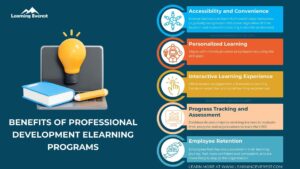How To Get Your Learners to Remember More
Imagine this: You’ve spent weeks designing a visually stunning eLearning course, packed with rich content, interactive elements, and real-world case studies. Yet when you ask your learners to apply the material two weeks later—they barely remember anything. Frustrating, right?
You’re not alone. One of the biggest challenges in instructional design is not just teaching content—but getting learners to retain and apply it. The good news? With a little understanding of how our brains process information, you can design courses that not only deliver content but actually stick with your audience.
Why Learners Forget
The human brain is amazing—but it has limitations. One of those is working memory: it can only hold a few pieces of information at once. Think of it like a tiny whiteboard where all the thinking happens. If you clutter it with too much info, there’s no room left to process or make connections.
That’s where long-term memory comes in—the brain’s filing cabinet. The goal of any course should be to move information from that tiny whiteboard (working memory) into the filing cabinet (long-term memory), where it can be pulled out when needed.
So, how do we do that effectively?
Course Design Strategies That Boost Memory
Here are three research-backed strategies you can use right now to help your learners retain more of what they learn:
1.Chunk Your Content
Ever tried remembering a phone number in one go? It’s a lot easier when it’s broken into chunks (e.g., 123-456-7890). Your learners process eLearning the same way.
Tip: Break your content into bite-sized segments. Use bullet points, short video clips, and visually separated text blocks. Adobe Captivate makes this super easy with content blocks and widgets like flip cards or tab layouts that naturally group related concepts together.
 2.Connect New Info to What They Already Know
2.Connect New Info to What They Already Know
Memory isn’t created in isolation—it’s built on top of existing knowledge. The more connections learners make between old and new ideas, the easier it is to remember.
How to do it: Use analogies, metaphors, or real-life examples they can relate to. Include case studies or scenario-based learning where they apply new info to familiar situations. Adobe Captivate’s scenario slides and character blocks are great tools to simulate real-world settings for learners. 3.Use Real-World Practice
3.Use Real-World Practice
Let’s be honest—nobody remembers something they read once in a slide deck. We remember by doing. This is called knowledge transfer—taking what you’ve learned and applying it to new situations.
Design idea: Add practice exercises, interactive quizzes, or drag-and-drop activities. Try flip card widgets or “click-to-reveal” elements in Captivate to encourage exploration and repetition. These tools keep the brain active, helping to reinforce memory.

Think Beyond the Slide
Helping learners remember isn’t about dumping more information onto a slide—it’s about making that information meaningful and manageable. Here’s a simple framework to guide your design:
- Minimize clutter. Only include what’s relevant.
- Engage with visuals and interactivity. Use Adobe Captivate’s carousel or tab widgets to let learners explore at their own pace.
- Repeat important info in new ways. Use animations, voiceovers, and captions to present the same idea through different formats.
Remember: It’s Not About Knowing. It’s About Doing.
At the end of the day, your learners don’t just need to know something—they need to use it. So ask yourself: Are you building a course that dumps data? Or one that helps learners think, connect, and act?
The difference lies in how you structure your content. And with the tools available in Adobe Captivate—like interactive widgets, scenario-based templates, and real-time feedback elements—you’ve got everything you need to create a course that’s not just memorable, but meaningful.
So the next time you start designing a course, keep your learner’s brain in mind. Help them think less about memorizing and more about understanding. Because when you design with memory in mind, you’re not just teaching—you’re transforming.




